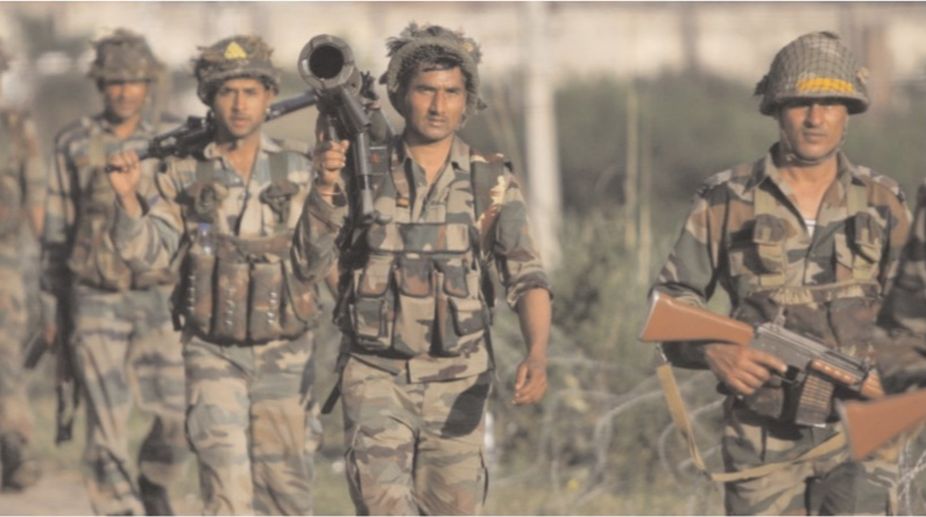The Supreme Court recently issued directions that irrespective of the Armed Forces Special Powers Act (AFSPA) being in force, an FIR would be registered in the case of every encounter involving the army. This direction was issued when it was hearing allegations pertaining to the period of insurgency in Mizoram, where the army was instrumental in bringing the state back from the brink. It also allowed a special probe into some allegations against the army in Mizoram. The Court also asked the Centre to consider implementing weapons other than pellet guns to reduce casualties in Kashmir and simultaneously made suggestions for talks with separatists, which were rejected by the government.
I am not a law expert, nor legally qualified to question directions of the highest court, nor do I seek to challenge the competence of our learned judges. I am simply an Indian who has witnessed insurgency at close range, lost comrades to bullets and seek a peaceful solution to insurgency problems facing the nation, whether they be in Chhatisgarh, the North-east or Kashmir.
Advertisement
I am aware that bullets do not solve a problem. However, when those who feel that only stones or bullets which hurt or kill government representatives, whether it be the army or other security agencies, can compel the state to accede to their demands, they must be responded to in equal measure, by force. I wish to highlight issues which may have been missed by those accusing the army of crimes against the public, while possibly opening doors to a debate.
The army or supporting security agencies have never invented a problem. The problems have arisen either due to political failures or because a weakness in the political system has been exploited by a group seeking power and control by force, supported in funds, weapons or ideology by an enemy power. When peaceful means to resolve the problem fail, the state moves in stronger forces. The ultimate instrument of power available to the state is the army. It cannot afford to fail, as it is the instrument of last resort. Hence it must be provided with special powers, thus AFSPA.
AFSPA was neither crafted by the army nor drafted by soldiers. It was enacted by Parliament seeking to ensure that a situation was brought back from the brink. In the process, the army creates an environment by application of power, for a political solution to follow. It has been successful in Punjab, Nagaland and Mizoram. The environment was also created on numerous occasions in Kashmir, but no government could capitalise on it.
Battling insurgency is never a zero-sum game. Whenever troops are fired upon, they would retaliate, casualties would occur, so would collateral damage. Security force personnel are not holy cows. They are concerned husbands, sons and brothers, who seek to return home in one piece after the completion of their tenure. They are not suicide bombers who have joined just to die, nor are they desperate rapists. Seeing their brethren targeted by bombs, guns and stones, the army hits back, with the tools at their disposal, rifles. It is human nature.
Troops involved in battling insurgency are always considered oppressors in their area of operations, even if they do their best to win hearts and minds. Kashmir is an example. The same youth who pelt stones and openly protect militants in encounters, participate in army-organised cricket competitions and youth festivals. They flock to join the army when recruitment rallies are conducted. Accusations would always flow and separating the wheat from the chaff is almost impossible, as the army is not local. It also represents the Central government against whom the battle is being fought. Fake claims would be the order of the day and become a boon for so-called human rights activists, seeking to earn a living in the safety of air-conditioned comfort, secure because of the environment created by those who gave their blood and life.
It is easy to look back in time, sitting in comfort, secure from the firing line and criticise those who gave their blood and sweat to create an environment of peace, which the region presently enjoys. In the initial stages of insurgency in Nagaland and Mizoram, the region being remote, army personnel who sacrificed their lives were cremated in situ. For the parents of Lieutenant E Thomas Joseph, it was a dream come true when the remains of their son were transported back to Kerala after lying in a remote church in Chakkabama, Nagaland, for 24 years. It took his course buddies weeks to locate the grave. Such has been the sacrifice, but the army has earned no praise from these arm chair critics, just hatred and it has been accused of deeds which they may have never committed.
I wonder if human rights activists are aware that it is only the Indian Army which battles anti-nationals with just rifles. Other nations like Pakistan, China or even Russia employ far more repressive measures, without a care about civilian casualties. Syria battling militancy and terrorism shows how desperate a force can become to bring an adverse situation under control.
While a miniscule percentage of the population would levy charges against the army, majority would support its actions because of its yeoman service. The army is part of India and did not drop down from heaven. To blame the entire force and attempt to make functioning more difficult by placing strictures is establishing a wrong precedent.
The hypocrisy of the situation is that local police fail in controlling a rising movement, compelling the army to move in. With FIRs lodged, the same police force will possibly question those who are its rescuers in difficult situations. How much more hypocritical can we become as a nation? The only saving grace is that most Indians have enormous respect and regard for the army.
The writer is a retired Major-General of the Indian Army.
















